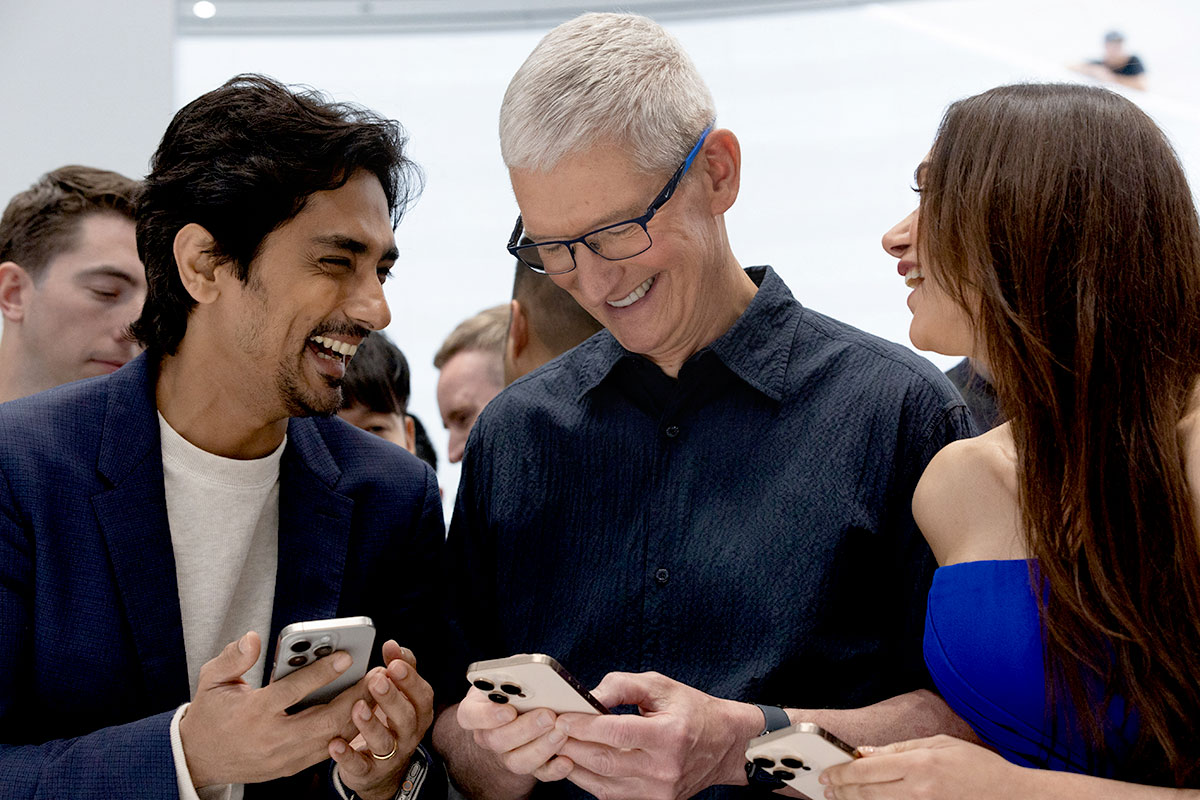Have you wondered how many days of work -- depending on your net monthly income -- you would have to put in to buy the top-end iPhone 16 Pro which costs Rs 184,900?
And, if you didn't buy it, what you could do with the money?

The iPhone 16 Pro, which has just hit the market is being touted -- with its cutting-edge technology and sleek design -- as the most coveted smartphone in the world right now.
With its top end version -- the iPhone 16 Pro Max, 1 TB -- costing a whopping Rs 184,900, you might be wondering how many days you would need to work to afford one after mandatory deductions like tax deducted at source, provident fund, etc.
Let's break it down.
If you earn Rs 50,000 in hand per month, it means your daily wage (assuming a 30-day work month) is Rs 50,000 ÷ 30 = Rs 1,667 (If you decide to divide by 31 days, the amount reduces to Rs 1,613).
To buy the iPhone 16 Pro, 1 TB version, you would need to work 112 days, which slightly less than four months (Rs 184,900 ÷ Rs 1,667).
But is life as simple as that?
If you spend all your money on the phone, how are you going to survive the month?
What will you eat? How will you go to office and reach home? How will you pay your phone bill?
Electricity bill? Broadband bill? The istri walla? And your rent (You may not be paying rent if you live with your parents but, as you are earning, you will need to give them some amount, won't you)?
What about your medical expenses, if any? Your hair cut? Your beauty parlour visits?
Clearly, you can't spend every rupee you earn to buy an iPhone.
Let's assume you need about Rs 30,000 per month to cover your basic living expenses including rent, groceries, utilities and transport.
That leaves you with Rs 20,000 each month as your savings. In that case, it would take you approximately 9.2 months (Rs 184,900 ÷ Rs 20,000 is approximately 285 days, assuming an average of 30 days per month).
So, even though it may take 120 days of work in theory, it could realistically take you nearly 10 months of saving your remaining income to finally get your hands on the iPhone 16 Pro, 1 TB version.
However, if you are not a die-hard Apple fan who absolutely needs to have the latest iPhone, here are other things you can do with that money.
An exotic vacation
For the price of the latest iPhone, you could go on an unforgettable holiday and create beautiful memories.
Let's explore the kind of getaways you could enjoy with Rs 184,900.
1. Beautiful India
India is truly amazing and you can explore our gorgeous country on a budget -- Rediff.com's Mayur Sanap tells you how. Or, since you have the money :) -- you can add a dash of luxury to your travel plans.
Adventure, breathtaking landscapes, mighty mountains, pristine beaches, spiritual tourism, India offers it all.
If you are still wondering where to start, check out our vibrant travel section.
2. India's neighbours
You could opt for Sri Lanka, where travel is reasonably priced and offers the joys of beaches, monasteries and great food.
If you go to Myanmar, don't forget to follow the pagoda trail.
Or plan a trip to Nepal; you can tuck in a bit of northeast India as well.
Here's a glimpse of Bhutan, the country that uses the gross national happiness index to measure the well-being of its population.
And then of course, there's China and its historic Great Wall, one of the new Seven Wonders Of The World.
3. Bali, Indonesia
Bali is a haven for those seeking a perfect blend of adventure and relaxation.
With Rs 184,900, experience the island's rich culture through temple tours and traditional Balinese performances.
Indulge in spa treatments, snorkel in crystal-clear waters or even go on a sunrise trek up Mount Batur.
Don't forget to check Ubud's lush rice terraces, the country's pristine beaches and the vibrant nightlife at Seminyak.
4. The Maldives
The Maldives is synonymous with gorgeous beaches and stunning coral reefs.
Sip your favourite drink and tuck into a meal as you watch the waves.
You must also a sunset cruise and snorkel with the manta rays.
5. Santorini, Greece
Santorini's iconic whitewashed buildings and blue-domed churches set against the backdrop of the Aegean Sea make it a dream destination.
With Rs 184,900, you can enjoy the island, spend your days exploring ancient ruins, lounge on volcanic beaches and sip wine at its vineyards.
Enjoy the stunning sunsets in Oia, take a sailing tour around the caldera (a large circular depression that forms in the ground after a volcano erupts and collapses) and sample Greek cuisine.
These are just some suggestions we've come up with; Dear Readers, do suggest more in the message board below.
Alternately, you may want to start saving for the future.
SIPs to double Rs 184,900
Let's first look at what can happen if you invest the entire amount in a mutual fund for 10 years with the expectation of earning a modest compounded annual growth rate of 8 per cent, 10 per cent or 12 per cent per annum.
If you invest Rs 184,896 as a lump sum in mutual funds for 10 years, here's how much it could grow, depending on the CAGR (compound annual growth rate):
At 8 per cent CAGR, it will grow to Rs 399,010 (and your investment will double).
At 10 per cent CAGR, you will earn Rs 479,422 (more than two-and-a-half times your investment).
At 12 per cent CAGR, you'll find yourself with a cool Rs 574,285 (more than three times your investment).
Now, let's look at an example where you invest Rs 15,408 every month for 12 months (Rs 15,408 x 12 is equal to an annual investment of Rs 184,896).
After the first year -- by which time this amount will be exhausted -- let your money stay invested passively for another nine years (making the total investment period 10 years).
Let's assume you earn a return of 14 per cent year-after-year (do remember, however, that investing in MFs is subject to market risk).
After investing Rs 15,408 as SIPs for 12 months, at 14 per cent return, the money accumulated at the end of one year would amount to Rs 199,567.
Assuming a 14 per cent CAGR, this amount -- invested passively for the next nine years -- would approximately become Rs 703,901.
This proves that even a short-term investment of 12 months can grow significantly when left to compound over a longer period.
So, what will you do with Rs 184,900? We'll leave you with that happy dilemma :).
![]()







 © 2025 Rediff.com -
© 2025 Rediff.com -